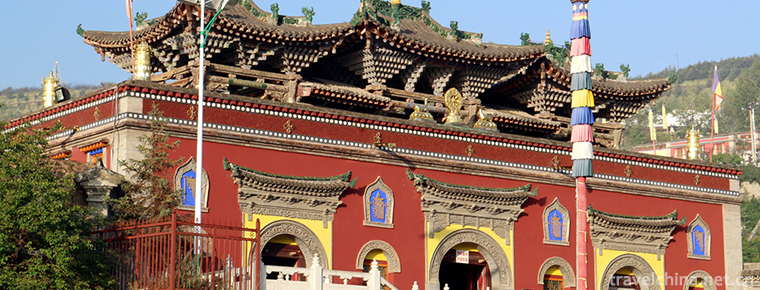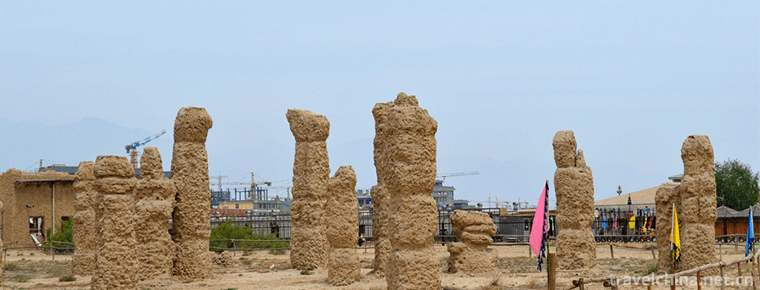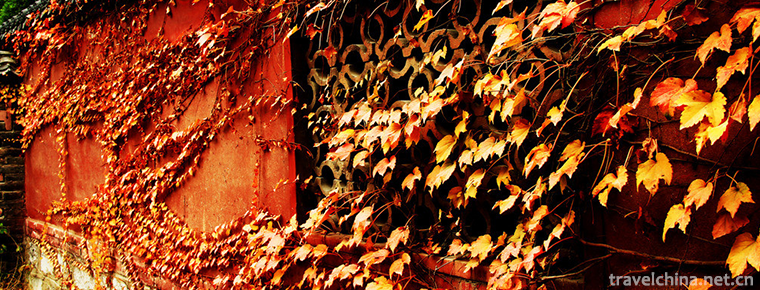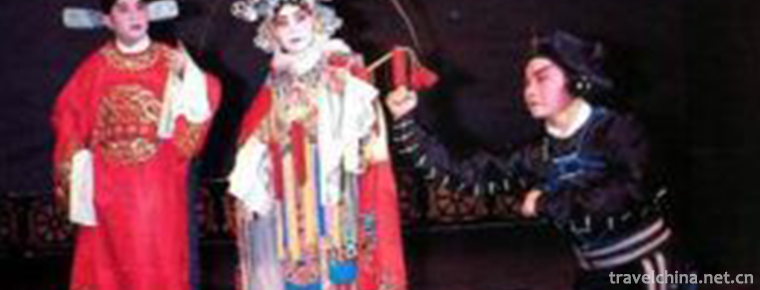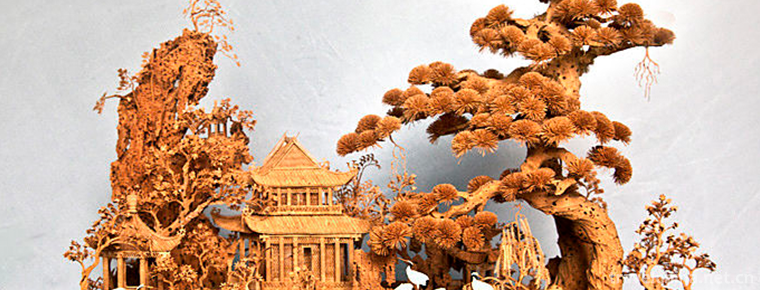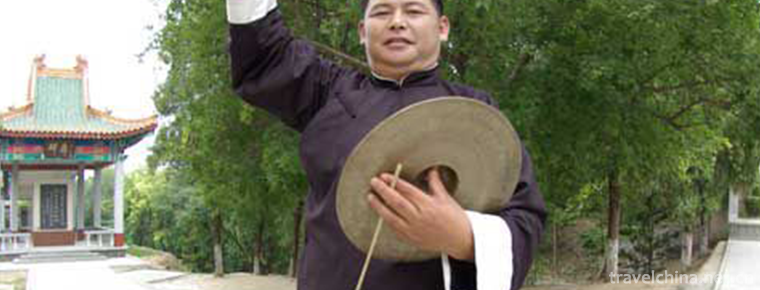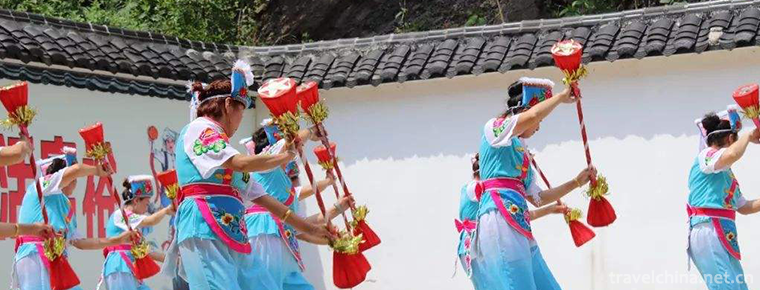Dajueshan Scenic AreaZixi County Fuzhou City
Dajueshan is located in Zixi County, Fuzhou City, Jiangxi Province. Dajueshan is rich in wildlife resources and widely distributed. It is praised by experts as "Natural Oxygen Bar, a rare gene bank of animals and plants in China".
With beautiful mountains and rivers, luxuriant mountains, clear streams, primitive natural features, clean air, fresh and pleasant climate, Jiangxi's rare green vegetation has attracted the attention of experts at home and abroad, and is known as the "ecological kingdom, Chinese jadeite". Dajueshan Scenic Spot was successfully selected as "Ten Scenic Spots of New Jiangxi Po", which shows its charm. On February 25, 2017, Dajueshan Scenic Spot in Fuzhou City, Jiangxi Province, was newly promoted to the national 5A level scenic spot.
Main attractions
Great awake
Dajuezhe is 1338 meters high, magnificent and magnificent. It is known as the "Son of the Earth, the First Heaven of the Yuan Dynasty". It is located in the east of Dajuezhe Temple, and is the most brilliant and attractive core of religious and cultural tourism in Dajueshan. What is the Great Awareness, that is, the Great Awareness of the World. What is man? The Great Awakened One is an indivisible organic whole of all things. As far as people-oriented is concerned, the Great Awakened Man is the highest realm of human beings and the symbol of the Son of the Earth. Taking heaven as the starting point, Da Awakening is the sunshine of all things. People yearn for a better and lofty spiritual realm and the pursuit of their hearts.
Tai Jue Temple
Dajue Temple is one of the most important scenic spots in Dajue Mountain. It is located in the tourist area of Dajue Mountain. It is 6 kilometers away from the gate of the scenic area and has a core area of 18,000 mu. Buddhism, Taoism and Confucianism, a religious pilgrimage Resort and the famous Dajue Temple in China and abroad for hundreds of years, are situated in the natural stone cave of Lianhua Mountain at an altitude of 1118 meters. The cave is 12 meters deep, 60 meters wide and 6 meters high. The depth of the cave is rare in the world. Lianhua Mountain has unique peaks, clear "smart spring", towering "double candlestone", mighty "general stone", mysterious "pagoda", quiet "Lv Dongbin" reading hole, upright "Xiaoyao Feng", and legendary "LongBed Cave", "Shui Curtain Cave", "Goddess Stone", "No Old Pine", "and so on. More than fifty scenic spots, such as "Shengui Wentian" and "Shuangrufeng", are located around Dajue Temple.
sky Lake
Tianhu Lake: Also known as Dajue Lake, the lake is 2700 meters long, 47 meters deep, with a rainwater catchment area of about 15 square kilometers, water storage capacity of 2 million cubic meters and an elevation of about 500 meters. Alpine lakes surround the main peak of Dajue Temple, sunrise reflects the lake surface, green mountains, green lakes, blue, dusk at night, cranes, birds and green lakes at sunset. The lake is surrounded by the main peak of Dajue Temple and inlaid between the Lotus Mountains. It is known as Tianhu Lake.
Tian Ling
Along the East Canyon mouth of Tianhu Lake, Tianling is the Guanyin Pavilion of Dajue Temple, where rivers and streams flow continuously, and deep valleys and oceans of clouds. Along the pavilion, it reaches the Chueyan Temple. After passing through the winding mountains and mountains, its road is full of danger, hardship and excitement, which makes tourists full of life and hardship, and makes them realize the essence of the journey of Dajue Temple because of Shang Dajue Temple. Walkers must walk around the Tianling Mountains, which are hard and difficult. It is like climbing the heavens. It also shows that the minds of literati and disciples are towards Buddha. So it is called Tianling Mountains. Tianhu Lake is the only way to Tianling Mountains.
Rooftop
The rooftop is located in the southeast direction of the last section of Tianling Mountains. After the tourists walk to the rooftop, it is an important place for tourists to worship and heaven and earth. The rooftop is designed according to the ideological elements of traditional Chinese culture. The rooftop is arranged in a circular way in the southeast direction of Dajue Temple, meaning the sun rises. In the place where we get up, we have a pavilion and incense for people to see heaven and earth. In front of the pavilion, we have a bottle of square tripod, which is the symbol of the roof and the main view of the roof.
Tian Yan
Through Tiantai to Tianyan, this rock is also called Dajueyan, which is formed naturally and divided into four rooms naturally. It is the main place for religious and cultural activities with Buddhism, Taoism and Confucianism as a whole. The temple was built in the Eastern Jin Dynasty. So far, it has been a rare natural cave in China for more than 1600 years. The religious and cultural development of Dajueyan Temple takes this cave as the starting point. And with the first-class concept and new products, the temple facilities will be built to restore the original appearance of the temple.
Footbridge
Tianqiao is located in the fairy stone area under the main peak of Dajue Temple east of Tianyan, where the mountains are high and steep, the clouds and seas are full of trees, the bells of ancient temples can be heard on the mountains, and the streams can be heard downstream. Tourists cross the Tianqiao and come to this place, which makes people full of the mood of the past 5000 years of China like clouds and empty doors.
Sky Gallery
On the cliff cliff of the main peak of Dajue Temple on the east side of Tianqiao, a 100-metre-long space corridor is constructed, which is called the gallery. The space corridor is formed by a transparent ancient trestle road and passes over the cliff cliff. The view of Wuyi Mountains'rolling peaks is very clear. Below is the abyss of Wanzhang, which enables visitors to appreciate the beauty of Wuyi Mountains in a thrilling excitement. Natural scenery, at the same time, shows that only those who have courage and insight to pass through the gallery, can truly landscape out of the ambition of one's heart.
Heaven boundary
Tianjie is located in Dafoshan Mountain above the cliff in the north of Lianhua Mountains. After tens of millions of years of wind and frost and natural weathering, the cliff is very similar to the Buddha body, facing the Dajue Temple, and there are gods in the dark. It is planned to restore the "Dajue" on the top of the mountain. The rebirth of "Dajue" is harmony between heaven and man, the unity of heaven and man, the auspicious omen of Buddha's lifetime, and also the true reappearance of natural ecology.
Temple of Heaven
The Temple of Heaven is situated on a hilltop in the eastern part of Lianhua Mountain. It is a place for worshiping the "Great Awakener". It is about 300 meters away from the natural Buddha "Great Awakener". The shape of the Temple of Heaven is also in the style of the local ancient architecture of Tianhe. It is connected by several small orthodox Buddhist steps and is oriented towards the direction of the "Great Awakener" (northeast).
Sky street
Tianjie is located in the northern ridge of Lianhuashan Mountain, which is the natural passageway between the Tiantai and Zhaiyuan scenic spots. Tianjie provides a place for visitors to rest and sightseeing. When visitors come to Tianjie, they are like entering fairyland. Tianjie has both the prosperity of folk market and the beautiful imagination and space of fairyland, which makes people real. Feeling Dajueshan is the empty garden where human beings really dream of returning.
Zhai yuan
Zhai Yuan is located in the mountains and forests in the north of Lianhua Mountain. It is a transitional part of the nine-day landscape. People dream for nine days. Visitors to Da Awakening have gone through the eight-day barrier. Finally, when they come to Da Awakening, they need to go to Zhai Yuan first. Through vegetarian diet, they can express their will and determination to devote themselves to Buddha. Visitors can reach Zhai Yuan through Tianjie. It is a place for pilgrims to rest and eat.
Oil spring
The legend of Youquan, Miquan and Longquan: Since the worship of Dajue Mountain, tourists have been knitting and Guanyin Bodhisattva has come to practice here, which has attracted countless believers to pray. However, Dajue Mountain is far away from the village because of the inconvenience of food carried by the worshippers. When Guanyin Bodhisattva sees it, he uses his hand to point at Dajue Temple. There are two springs beside the smart spring. One springs produces rice and the other springs produces oil. This saves worshippers from the burden of climbing mountains. The peculiar thing is that the rice and oil flowing out of the springs are limited to worshippers, so that more people come out, fewer people come out, and there will be no surplus.
There are rocks in Dajueyan and legends in legends. There are also folklore that Longquan Cave used to be called "oil and rice cave". Not many years ago, monks and nuns who often lived in the temple and those who came to the temple to pray for incense and incense had to take food with them. There were two caves in Longquan Cave, which flowed oil and rice spontaneously, just to meet the needs of the people in the temple on that day. It flowed day after day, year after year. Because a monk was greedy, he wanted to sell more oil and rice. He dug the hole in the middle of the night at three o'clock. As a result, he was found by the fairy that people were not satisfied and wanted to sell enough food. The fairy was so greedy that he blocked the two caves with stones. From then on, oil and rice never flowed again, but the fountain of wisdom kept flowing. Smart Spring is also called Longshui. Tourists know its origin and want to drink some cool and delicious Longshui. I really feel that it has a unique fairy taste.
Zhu Ya Feng
The old people often refer to the "pig's stone" as the mountain is like a boar's tusks. Wang Anshi, a Chinese politician and Linchuan native, went to Dajueshi and elegantly transformed the mountain into "Zhuya". In the Ming Dynasty, Jianchang Fu Zhi was a "stalagmite mountain" with sharp stones rising like bamboo shoots and skylines. The landscape of Zhuya was like mushrooms after rain. In the Northern Song Dynasty, Rao Zi had a poem: "Yungen covers three thousand feet of land, the first peak of stalagmites in heaven", which was uploaded in the old records of the Qing and Qianlong Dynasties. The sunshine is bright and the title is Zhuya Furi, which is one of the eight scenic spots in Luxi.
Fairy reading hole
Legend: On the right side of Dajue Temple, there are two interlinked small stone chambers. It is said that Guanyin Bodhisattva is the place where he reads and recites sutras. Since Guanyin Bodhisattva came here to practice, pilgrims have been coming in endlessly. Guanyin Bodhisattva is not used to being busy. He has opened two caves beside Dajue Temple, where he usually reads and recites sutras. There is a spring under the cave where she washes ink. In the distance, there is a stone-shaped inkstone. The penholder of one stone is for her to grind ink and put pen on.
According to folklore, Wang Anshi, a Chinese politician, once visited Dajueshan, the Dajueshan Reading Cave. It is said that when he arrived at Dajueshan, he found a natural cave not far from the temple, where he read and left his pen and ink.
Fan Stone
Visitors can walk along the river to the turning point, look up to the left, two fanlike inserts on the 500-meter-high boulder, people call it fan stone, also known as double pigeon stone. Legend has it that when the immortal read in front of the rock, he threw the fan down the hill with a whim of his heart and soul. As a result, the fan was inserted on the Gushi Peak. How many years has it been inserted so far? Let archaeologists answer it well!
Banshan Pavilion
Mountaineering is fearful of hardship and natural recreation. After crossing Tongtian Street, walking halfway up the hill pavilion, wooden climbing is easy for visitors. It is like entering fairyland, suddenly listening to the noise, firecrackers come in fragrance.
Candlestick
The two candlestones, also known as double pillars, are about 50 meters high and about 4 to 5 meters in diameter, standing on both sides of the waist of Lion Rock. According to legend, the fairy went down to read in the reading hole and flew through the middle of the two candlestones, so nature arranged this pair of candlestones to meet the gods, so it was called the double candlestones.
Little Sigiriya Lion Rock
Legend has it that a little lion was frightened when fighting with a lioness, so she hid herself under the lioness belly, exposed one head, opened a small mouth outside, and the lioness's mouth welcomed past tourists.
Stone pagoda
Tourists walk out of Dajueyan Temple and go east for about 300 meters. Under the bare rock on the left side of the road, there is a stone-like mysterious pagoda. People call it a mysterious stone pagoda. It has a personality. On the dangerous peak beside it, there is a pine tree growing alone from the crack of the stone. The branch of this tree is more than its own. Its trees should be short and thick. What's strange is that they can't be blistered, dry in hot weather and can't be burned. So people call it "not old pine". How many years have it grown? Nobody knows. Now it has become a rare scenic spot for tourists to take photos.
Dragon Rock
It is on the big stone 5 meters above Dajueyan, which can hold more than 20 people. There are hundreds of different small round stones growing in the rock. They are placed there like dragon beads. A small tree grows naturally under the rock mouth. People can visit the tree. Unfortunately, the tree was cut down during the Cultural Revolution. Now the rock is not so good. It's easy to climb.
Ox back ridge
Walking out of the halfway Pavilion and striding across another scene, it is feasible to see the back of cattle, which is the only way to yearn for Dajueyan. It resembles the back of cattle and is also called the back of fish. It lies on a lonely and bare boulder and looks down on both sides. It is a cliff, a deep abyss. In the past, pedestrians used to be careful when passing through it, otherwise they would be in danger of sliding down the rock. Due to the increasing number of worshippers in Dajue Temple, in order to be safe, a small staircase was drawn on the back of the cattle. Now tourists can pass by with their hands sprinkled.
Xiao Jue Yan
Xiaojueyan was more than ten miles northeast of Zhuya Village, and later changed to Jintieyan. At the top of the rock is an open large stone flat. It is said that during the Taiping Heavenly Kingdom, the rest of the Taiping Army leaders, a leader named Yu Jiao, had stationed and trained Taiping Army in this rock and made weapons in it.
Eight places
That is, the eight mountains around Dajue Peak stand on the ground to form lotus flowers, which surround the main peak of Dajue. It is honored as Lotus Flower Peak, Shengui Peak, Bijia Peak, Cuiping Peak, General Peak, Wenqu Peak, Yiluo Peak and King Kong Peak.
Hundred landscape
It refers to the natural landscape of Dajue Mountain, which is praised as "ten disciples of the Tathagata" and "the transformation of Guanyin 73". Only by supporting the panoramic view of Dajue Mountain, can we appreciate the various landscapes embellished in every corner of Dajue Mountain's Jianqi Valley. They are various and unique. With the backdrop of many landscapes, Dajue Mountain is like a lotus blooming in buds, which makes visitors linger and forget to return.
Transport line
1. The whole journey from Yaohu Bridge to Dongshang Expressway of Nanchang (Nanchang East Expressway Hurui Expressway) - Nancheng (170 km) - Zixi (242 km) - Dajueshan (8 km) - is about 3.5 hours.
2. The whole journey from Yaohu Bridge to Dongshang Expressway of Nanchang (Nanchang East Expressway Hurui Expressway) - Fuzhou (110 kilometers) - Jinxi (316 national highway) - Zixi (242 kilometers) - Dajueshan (8 kilometers) is about 3.5 hours.
3. Shanghai Chaobei District Zixi Dajueshan
1. Starting from the starting point, drive 101 meters west and turn right into Longwu Road.
2. Drive 461 meters along Longwu Road and turn left into Yindu Road.
3. Drive 5.1 kilometers along Yindu Road, turn right to the ramp and enter Xinfengjin Expressway/A4. Drive 2.1 kilometers along Xinfengjin Expressway/A4. Drive 2.1 kilometers from Shanghai-Hangzhou Expressway exit at Meilongxi Road Bridge, A8/Shanghai-Hangzhou Expressway/Shanghai-Min Elevated Road at the first turnout, A8/Shanghai-Hangzhou Expressway at the second turnout, Shanghai-Hangzhou Expressway at the third turnout, and Shanghai-Hangzhou Expressway at the third turnout. Enter Shanghai-Hangzhou Expressway.
Matters needing attention
Safety Bulletin
"New Jiangxi Po Ten Scenic Spots" Dajue Mountain is a primitive ecological natural scenic spot where mountains and waters blend and souls are strong and dangerous. Its "torrential boat rafting" is a sport adventure project with a certain life-threatening. All personal casualties and property losses incurred in violation of the following notification shall be borne by the tourists themselves.
1. Entering the scenic spot must consciously observe all safety warnings in the scenic spot.
2. Under 18 years old and over 55 years old; no experience in sports exploration; all illnesses such as cold; pregnancy, disability, intellectual disability or physical discomfort; those with weak emergency response ability, can not participate in drifting.
3. Lack of safety awareness, those who can not identify dangers, control risks and ensure their own safety in time, can not participate in drifting.
4. Before drifting, all personal belongings should be properly kept or deposited in the scenic spots. No articles should be carried while drifting.
Fifth, drifters must wear life jackets, safety hats and rainshoes provided by scenic spots tightly, and they must not take them off during the journey.
6. Drifting must be practiced at the starting point before drifting. Drifting can be carried out only after skilled control of the drifting boat.
7. Drifters must obey the safety tips of lifeguards, obey the safety command, use ships correctly, keep their chest straight, waist straight, pedal tight, hand steady, and not abandon ships without authorization.
8. In drifting, it is forbidden to chase, frolic or interchange interconnected vessels. The safe distance between the two vessels should be kept free from collision. In case of an accident, the safety of the lifeguard must be obeyed.
9. Before purchasing tickets, visitors should read and understand the announcement carefully, enter the scenic spots or board the boat for drifting, that is to say, they have fully understood and confirmed their acceptance of the announcement.
Special Note: Visitors or tour guides or leaders are invited to call the accompanying personnel to read the safety announcement carefully. If you have any doubts, please consult first. If you do not agree with the above announcement, please do not buy tickets, let alone participate in drifting.










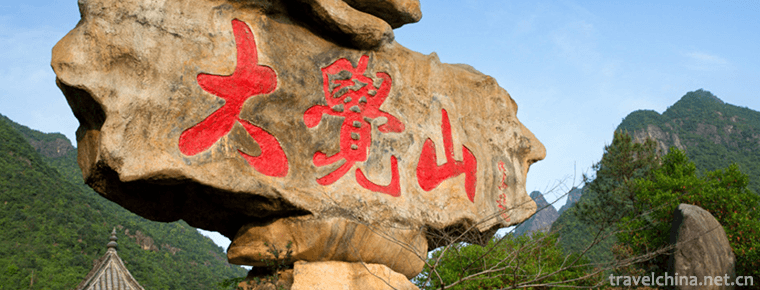
-
Taer Temple Scenic Area Xining City
Tar Temple, also known as Tar Temple, was founded in the 10th year of Hongwu Ming Dynasty (1377). Named after the Great Silver Pagoda built in memory of Zongkaba, the founder of the Yellow Religion.
Views: 124 Time 2018-12-12 -
Zhenbeibao West Film City
Zhenbeibao Western Film City, located in Yinchuan City, Ningxia Hui Autonomous Region, is a national AAAAA-level tourist attraction integrating sightseeing, entertainment, leisure, catering and shoppi.
Views: 147 Time 2018-12-12 -
Liao Zhai City
Liaozhai City was invested and built by Pujiazhuang, Zichuan. It is a large-scale famous garden scenic area with gardens as its manifestation and Liaozhai stories as its theme.
Views: 150 Time 2019-01-30 -
Qiyang minor
Qiyang in the north of Yongzhou is a kind of traditional opera widely spread. After a long period of evolution and development, it has formed a traditional folk art form with strong local color,.
Views: 133 Time 2019-06-10 -
Cork paintings
Cork painting, also known as cork carving, woodcut. Chinese traditional folk sculpture crafts. It is mainly produced in Fuzhou, Fujian Province. It is a handicraft combining carving and painting. Simp.
Views: 148 Time 2019-06-11 -
Xiamen lacquer line carving skills
Xiamen lacquer line carving technique is to use old brick powder, large paint and cooked tung oil as raw materials to mix, repeatedly beat into soft and resilient clay (commonly known as "lacquer.
Views: 84 Time 2019-06-12 -
Laozi Shandong Province
Shandong Laozi is a traditional opera art form which spreads in Shandong Province. It evolved from the ancient "lotus flower falls". Laozi instruments are mainly cymbals (commonly known as G.
Views: 164 Time 2019-06-13 -
Encouragement of Sangzhi Battle
Sangzhi Bai people's fighting drum is mainly distributed in seven Bai villages and towns, such as Mahekou, Maidiping, Furong Bridge, Hongjiaguan, Zoumaping, Linxi River and Liu Jiaping. In other half .
Views: 419 Time 2019-07-25 -
Chengdu Dien Photoelectric Technology Company
As an energetic, young crystalline materials technology company, DIEN TECH specializes in the research, design, manufacture,and sell of a series of nonlinear optical crystals, laser crystals, magneto-.
Views: 396 Time 2019-09-11 -
Yibin white tower
Baita (also known as Dongyan pagoda) is located in Baita Mountain Scenic Area of Yibin Lingang Economic and Technological Development Zone. It was built in 1569, the third year of emperor muzong's reign in the Ming Dynasty..
Views: 110 Time 2020-10-16 -
Transportation in Panzhihua
By the end of 2018, Panzhihua had 3733.91 kilometers of grade roads and 195 kilometers of expressways. In the whole year, the highway passenger traffic volume was 20.79 million person times, the passenger turnover volume was 597.18 million person kilometers,.
Views: 113 Time 2020-12-14 -
Hydrology of Neijiang River
Tuojiang River is the main river in the urban area. It flows through Zizhong, Dongxing and Shizhong District. It is the main waterway transportation route in the city. Since ancient times, there has been a busy scene description of "boats of ten thousand trees.
Views: 299 Time 2020-12-16
